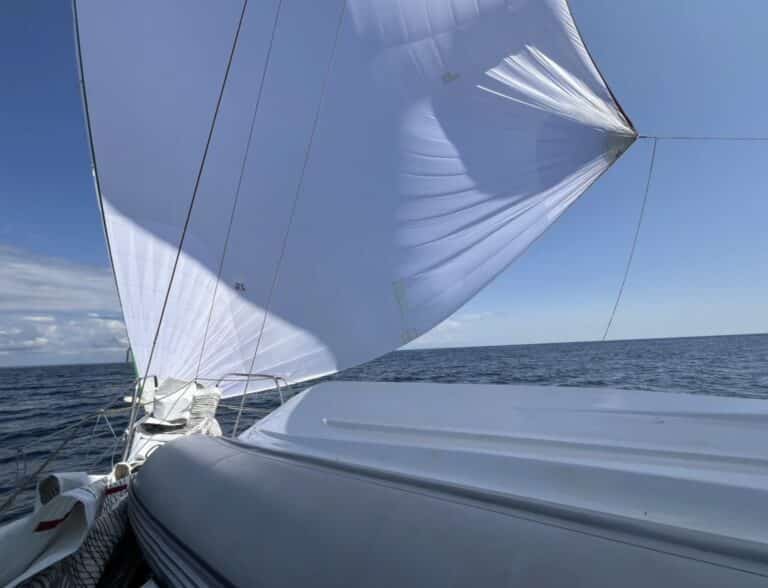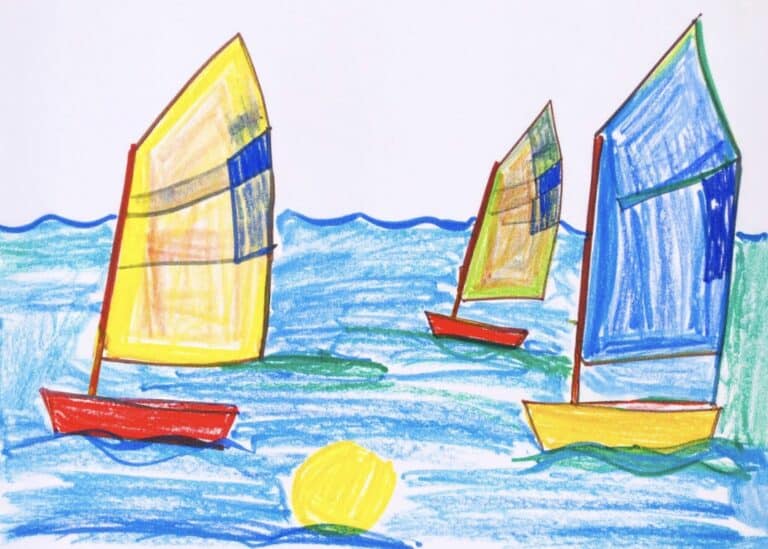A Different Way to Start a Distance Race is Needed–Here’s Why
A different way to start a distance race is needed because distance racing is a completely different breed of cat than the average 8-10 mile around the buoys day race.
Tactics are everything in a day race. A good tactical start is a must and then everything becomes a matter of staying between the competition and the next mark.
Before-the-race preparations are a snap. After making sure his boat’s bottom is clean, a skipper may bring lunch, water and a few beers for after the race. Of necessity, the good, tactical start is critical so boats invariably end up in close quarters with each other.
Now, let’s consider a distance race start. The thinking is more strategic in nature. What’s the wind going to do this afternoon and tonight? Do we have a current situation to contend with? What shore do we want to favor? A good tactical start is of little or no consequence given the distance to go. Let’s keep our air clear and make sure we’re getting the most out of our sails.
In one of the many Newport-Bermuda Races I’ve done, while maneuvering under sail near the starting line, the boat I was sailing on collided with another boat almost head-on. Both boats were damaged but the damage to my boat was severe enough to cause the skipper to withdraw from the race. DISASTER!
Both skippers were experienced sailors but a short lapse in their attention span turned this into an incident costing thousands in damage and ruining the vacation plans of 25 or so people.

Conclusion
Since the tactical advantage of a good start in a distance race is insignificant, why put the competing boats in close proximity where a collision or a protest can happen? Why not give them plenty of room and time so they can get a good start with clear air?
How would that work?
Instead of the typical start with posted starting times for each class, the Race Committee can post a starting time for a “window,” during which any boat sailing in the race can start.
Let’s assume we’re talking about a 150-mile overnight race and the RC has decided on a 3 hour starting window opening at 1300 that afternoon.
The Notice of Race might say something like this:
- The Warning signal will be made at 1255, the Preparatory signal will be made at 1256 the Starting Signal at 1300.
- From the Starting Signal at 1300, the Race Committee will monitor a 3-hour window of time (until 1600) during which any competing boat may start the race.
- The Race Committee will record the time that each boat crosses the starting line and that will be her official start time for the purpose of elapsed and corrected time.
- A description of the start and the procedure for starting the race will be published in the Sailing Instructions.
The Sailing Instructions might say something like this:
- The starting line will be between staffs flying orange flags on two official boats anchored approximately .25 NM apart in an approximate north/south line.
- Boats intending to start within the next 5 minutes shall call the RC on VHF Ch. 05A and identify themselves by boat name, sail #, and hull color and inform the RC of their intention to start.
- Boats that start will take their own time when crossing the starting line and report that time to the RC at the finish. This is a courtesy, the RC time will be official.
- Once a boat has crossed the Starting Line to the course side, her race has started. There are no recalls or “do-overs.”
Now any boat can start at any time the skipper wants. If the current is foul or the air is light, the skipper can sit and wait for the breeze to kick in or for the current to change. If there is a 15-knot wind from astern, the boat can start immediately. The key element here is that it is the skipper who decides when a boat starts, not the Race Committee.
Skippers and Navigators can plan their race days ahead of time based on wind, weather and current predictions. If Mother Nature throws a curve ball, they can sit it out for an hour or so until things (hopefully) change to their liking. For the competitors, the start is easy and should be stress-free because there is far less chance of a protest or a collision. There is no reason for a less experienced sailor to get nervous about being in a crowd. Just pick your spot when and where there is no one else around. Every boat should start with clear air at whatever end of the start line the skipper thinks is favored.
Importantly, this procedure for starting a race also has significant benefits for the race committee. First and foremost, their job is much easier:
There is only one sequence of visual and sound signals required and that is for the start of the time window.
There are no recalls, restarts or postponements to worry about. (provided no one starts before the window opens)
The Race Committee simply records the starting time of each boat until all the boats have started or until the time the window expires. Thus, the size of the RC can be reduced significantly and smaller yacht clubs or sailing organizations can run bigger events.

Additional Considerations
This starting procedure is new and will likely change with use but here are some thoughts that pertain:
- The duration of the Starting Window is a Race Committee decision and contingent upon a number of factors. Probably most important is the length of the race but also the make-up of the fleet (disparity in size from largest to smallest) and typical weather conditions. Other factors will no doubt enter the picture with experience.
- The starting line will be made up of two manned boats, so no boat’s start is missed. Both committee boats should record the time of all the starts they see.
- There are no do-overs. Once a boat starts, the train has left the station.
- All competitors should record their own start times and report them to the RC at the finish. The “official start time” for a boat is that recorded by the RC but having the competitor’s time will help resolve any identification problems.
- It may help the RC if they set up a “starting area” using a couple of race marks and competitors only enter this area just prior to starting.
- It may help to have competitors call the RC on VHF prior to starting.
- There is no question that the tactical part of a good start (which many sailors enjoy) will no longer be important but this will be replaced by the strategic part of when to start given the wind & weather conditions as well as the boat’s size and performance. Skippers and Navigators may be able to reap significant benefits by doing their homework the day before the race.
- THE DECISION OF WHEN TO START NOW RESTS WITH THE COMPETITORS AND NOT THE RACE COMMITTEE.
There has been little experience in the use of this procedure. Larchmont Yacht Club and The Storm Trysail Club have co-sponsored a medium distance race called the Bitter Ender for the past two years. Both Bitter Enders used this starting procedure and were run by the recently retired Co-Chairs of the LYC Race Committee, Cynthia Parthemos and Mark Dailey.
Their contact information appears below and interested parties should feel free to contact them with questions.
Cynthia Parthemos: cparthemos@gmail.com or 914-522-8196
Mark S Dailey: mark@msdinusa.com or 203-722-3366
Charles “Butch“ Ulmer: butch@uksailmakers.com or 914-584-0584




